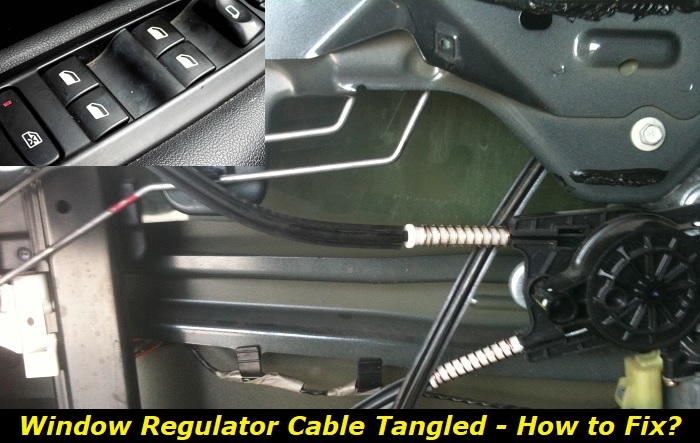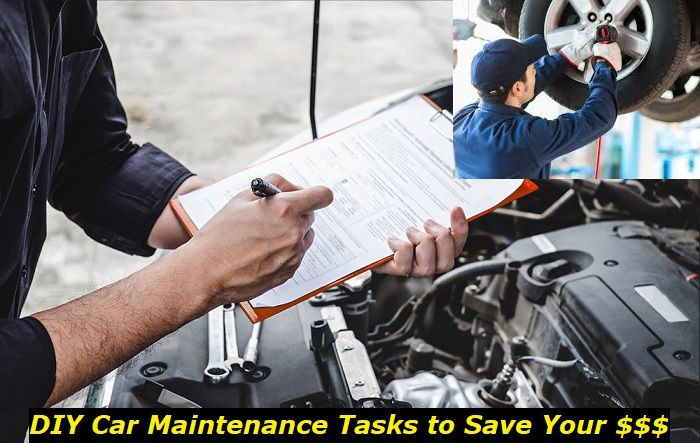Have you ever wondered how the windows in your vehicle work? What allows them to go up and down? Well, simply put that's the job of the window regulator. Mainly it is responsible for supporting the weight of the window while also giving it the ability to be manipulated up or down.
Electrical equipment problems highlights
- Level of urgency:low
- DIY inspection:possible
- DIY repairs:possible but complicated
- Can you drive?yes
- Price of repairs:$150 - $350
- Ifignored:problems may develop and escalate
- Ways to fix:diagnose and replace the broken parts, try resetting the affected units

Cable Type Regulator
The cable-type window regulators are the most popular versions on the market and usually, the newer vehicle models all have these.
Cable-type regulators have more components than scissor-type window regulators such as window brackets, pulleys, metal guides, wire cables, belts, etc. The mechanism is powered by a motor. Basically, the motor spins creating energy and drives the mechanism.
Due to cable-type windows regulators having more components and being more complex than their counterparts they are harder to service and diagnose.
We will later discuss some of the most common problems and ways to fix them so stay tuned!
Scissor Type Regulator
These types of window regulators are nowadays rare and can mostly be found in older vehicles. They work as the name suggests. Mainly, there is a mechanism that is made up of the main arm which is connected to the window holders by one end and a geared plate on the other.
The mechanism is simple to understand. Basically, the small arm crosses the main arm on a hinged point in the middle - creating scissor-like movement. This action occurs every time you wish to slide your windows up or down.
These types of regulators can be both manual and powered.
The most common issue with scissor-type regulators is that they fail at the moving points. This problem usually represents itself in the middle where the arms meet.
As with any other car parts wear and tear can happen. This can lead to numerous different issues, so be sure to resolve them as soon as possible!
Window Regulator Common Issues
Having in mind the type of regulator, there can be many different things wrong with it.
Usually, you would go about examining it differently depending on the type but today we will mostly focus on the above-mentioned scissor-type and cable-type window regulators.
For example, the most common issues for cable-type window regulators tend to arise due to extreme heat and cold which inevitably leads to over-time wear and tear.
Some components are more prone to breaking than others, and when talking about the cable type window regulators those can usually be nailed down to spring tensioners, pulley wheels, and the cable itself. Quite often, the cables can get tangled or even ripped out of the casings.
On the other hand, while reviewing the scissor-type window regulators one can notice that it is made up of metal parts. Due to not having a complex mechanism and fewer parts than cable-type window regulators they are less often to break.
The most common problems with scissor-type window regulators are welded pivot points, glass carriers being disconnected, and falling rollers.
Having the structure of the mechanism of the scissor-type window regulators in mind, the only big issue tends to be a motor failure.
Broken Cable on a Regulator
By far the most common problem that can happen to a cable-type window regulator is the cable being tangled or broken.
This can happen due to various reasons, some of which are as simple as the cable getting jammed in the door somewhere and suffering damage.
As we've mentioned above the most common problem for the components of cable-type window regulators tend to be colder temperatures. Moreover, the temperatures generally whether high or low can greatly increase the wear and tear of your vehicle, especially the cables!
Bad and worn-out cables can cause the windows to make annoying and screeching noises while moving, this is usually the best indicator that your cables are soon going to meet their end.
It's always good practice to check the cables first which would be the easiest replacement and fix before moving on to more complex problems and determining that the whole regulator might need to be replaced.
Also, it's important to note when it comes to cables that they can easily detach. So if the cables are not tangled or broken it's worth checking the connectors and making sure that everything is connected properly.
Mainly, the pulley system can over time get worn out and detach itself. This issue usually makes itself visible when you try to roll down your windows, there will be a slight pushback.
It's also a good thing to diagnose the window motor as well before totally opting for the case of a bad window regulator and replacing it.
If you've concluded that you might have tangled or broken cables, which is the most common problem with cable-type regulators, you might want to think about replacing the cables instead of trying to fix them.
There are also full replacement kits available including the motor and the regulator as one unit. However simple cable change can do the trick as well.
If you are a DIY kind of person, in the section below you will find a simple guide on how to replace the broken cable!
Fixing a Tangled Cable
Fret not because this is the easiest thing to fix and cable replacement will usually solve the problems that you are having with your window/s.
It's hard to see the cables and the wiring in the door panel because it is blocked by the window.
The first step would be to unbolt the panel and then find the screws which hold the window in place.
Different types of cars will have different securing clips, so you need to account for that. Lastly, slide the glass upward until it pops out of the channel.
After you've done this you will have a pretty good view from the top and you should be able to see the cables and the wiring as well as inspect them thoroughly and conclude if there is any damage.
If you've found some damage done to the cables, it's best to replace them straight away but not go about fixing them.
The next thing to be done is to unbolt the motor and the rest of the screws holding the regulator in place. After you've done so you should be able to pull out the whole thing sideways depending on your vehicle's model.
When you have the regulator out you can remove the bad cable and replace it with the new one if you did not opt to buy a full replacement kit.
The last step would be connecting and bolting back the regulator and the motor back in place. You must always check if something works when you can before putting it all back together to save yourself some time.
If everything works and the cable can roll up and down you can assemble the window and the door panel to put everything back in its place.
It can take up some time to remove and re-attach all of those parts, but if you do have a broken cable problem and some basic tools, you will be able to replace the cable without going to a car mechanic.
We hope this simple how-to-replace guide has been of help to you in replacing your cable or even the whole regulator.
Conclusion
In today's article, we've reviewed the most common types of car window regulators, those being cable-type window regulators and scissor-type window regulators.
We've skimmed through some of the more common problems that can arise, generally concerning cable-type window regulators since they are the most common ones on the market today.
Also, we've covered some of the reasons why the regulators might not be faulty but instead, the cable has been broken or tangled thus disabling the mechanism from working and rolling the windows up and down as intended.
Lastly, for all of you DIY girls and boys out there, some information has been provided on how to go about removing the door panel, windows, and the regulator itself so that you could replace the broken cable or even the whole regulator along with the motor if you've decided to buy the full replacement kit.
As always, keep your vehicle healthy and drive safe!
About the authors
The CarAraC research team is composed of seasoned auto mechanics and automotive industry professionals, including individuals with advanced degrees and certifications in their field. Our team members boast prestigious credentials, reflecting their extensive knowledge and skills. These qualifications include: IMI: Institute of the Motor Industry, ASE-Certified Master Automobile Technicians; Coventry University, Graduate of MA in Automotive Journalism; Politecnico di Torino, Italy, MS Automotive Engineering; Ss. Cyril and Methodius University in Skopje, Mechanical University in Skopje; TOC Automotive College; DHA Suffa University, Department of Mechanical Engineering






Add comment